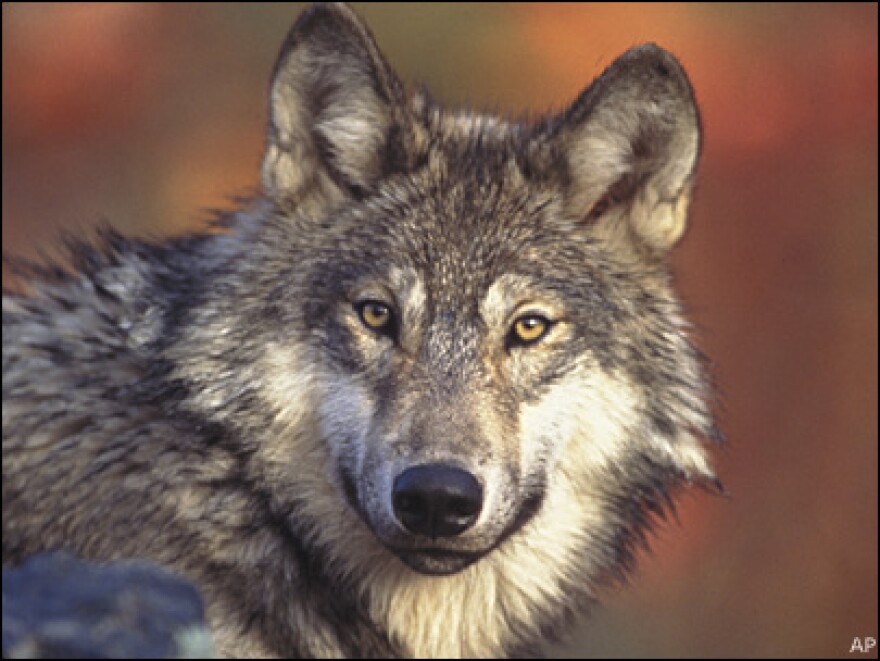This week the Wyoming Game and Fish Department released a report on the status of gray wolves in the state. While conservation groups have expressed concern about how aggressive hunting practices may be threatening wolf populations in Idaho and Montana, Wyoming's numbers are well above required population numbers. Game and Fish said that the state has a minimum population of 314 wolves, well above the 100 wolves and ten breeding pairs required by the U.S. Fish and Wildlife Service. Ken Mills is the lead wolf biologist for Game and Fish and he joined Bob Beck to discuss the numbers and their accuracy.
Ken Mills: As far as our minimums, those are commitments we made and in the delisting process that are written into our Wyoming gray wolf management plan. And so that's what we've used to set numbers and guide our approach for determining how many wolves we're seeking to maintain. And from there comes all of our management decision making. And so that's kind of the foundation of what we're looking at. When you're dealing with a wildlife population, for most wildlife, we are managing first rate numbers. So we have a population objective of X number of elk and a certain elk herd. With wolves, it's different. We have numbers, so the numbers of wolves and then we have a measure of reproductive success, which is breeding pairs. And so that adds a wrinkle into how we approach wolf management because we're looking at ensuring that we're meeting both of those commitments. And the positive there is the number of wolves and number of breeding pairs are highly correlated. And so we use that information to set our population objectives. And so for the last four years, we've been within nine percent of our population objectives. So we're doing really well with something that we've had to sort of invent along the way, nobody's managed wolves the way we've had to in Wyoming. So that's been really fascinating. But the other question you asked was how confident are we with the numbers? We probably know more about wolves in Wyoming, as far as the Wyoming Game and Fish Department in our management approach, than any other species. We have a very robust monitoring program. And for example, right now we have around 70 wolves collared in 22 out of our 24 packs. And so we're tracking a lot of wolves. And of course, pups are being born right now. And so the number that are actually collared out there goes down as pups are born. But that's why we have those collars, because there's turnover, and gives us a really accurate count…a census of how many wolves we have. A lot of people will call our numbers estimates, and they're not estimates, they're a census. We've counted every wolf that's included in the report. And so it's a highly accurate, highly robust count for the wolf population in Wyoming.
Bob Beck: When you consider the number of 314 wolves, what kind of number is that to you? Is that a pretty good number? Or are we seeing a lot of wolves right now?
KM: We have a statewide objective of 15 breeding pairs and 150 wolves. And it looks like the numbers of wolves were double that objective. And so that's good. We're in a good spot. As far as specifically in the wolf trophy management area, we're at a really good spot. I mean, we're right at the objective we set and the objective we set and that's 160 wolves and around 14 breeding pairs is set that way for a reason, because that's what the data says we should be managing for to ensure we're meeting our commitments, our management plan. And so we're right on where we think we should be. Over the last number of years, over the last five years, really, we've seen a decrease in the number of conflicts between wolves and livestock. We've actually seen a decrease in the impact of canine distemper virus in the wolf population. So when wolves were listed, about 70 percent of the wolves were exposed to distemper, and that will cause primarily juvenile mortality. So the mortality of young pups. Today, this last year, we were at six percent. So we've seen some improvements in that and that really just brings about more stability, more predictability in the population of what's going on, what kind of conflicts we're going to have and what's going to happen from year to year. And that's a good thing because it allows wolves to be on the landscape, to have a healthy thriving population, but minimizes some of the conflicts that can occur by having wolves on a human-dominated landscape. That's really one of the goals of our management approach so that number is a good number and it's showing to be a good number through the data we're collecting.







